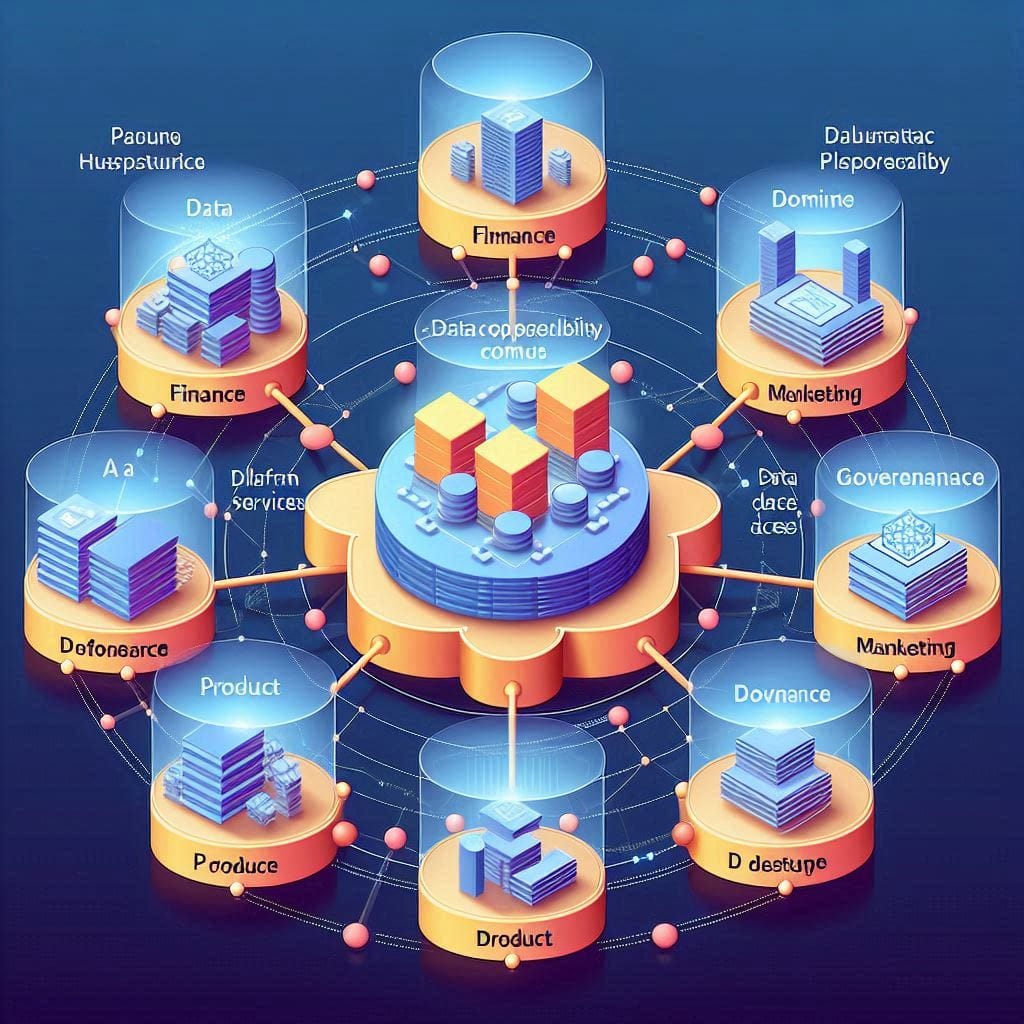In today’s fast-paced digital landscape, enterprises are increasingly finding it difficult to manage data across multiple systems and teams. Traditional centralized data architecture, often in the form of data warehouses or lakes, can create bottlenecks, delay insights, and limit scalability. Enter Data Mesh, a transformative approach to data architecture that shifts the focus from centralized data management to decentralized domain ownership.
In this blog post, we will explore what Data Mesh is, its key principles, and how popular organisations are implementing it to enhance scalability, agility, and data ownership. By the end of this article, you’ll understand why Data Mesh is being hailed as the next big thing in data architecture and how it can drive better decision-making in your organisation.
What is Data Mesh?
At its core, Data Mesh is a decentralised approach to managing data. It treats data as a product, allowing each domain within an organisation to own and operate its data. This differs significantly from the traditional centralised models where a single data team manages all of an enterprise’s data.
In a Data Mesh framework:
- Data is owned and maintained by domain teams (e.g., marketing, finance, product).
- Data is accessible as a product to anyone within the organisation who needs it, making it easier to derive insights.
- The organisation builds platforms and tools to enable seamless data access and governance, ensuring compliance and quality.
This approach offers scalability, flexibility, and improved collaboration across teams, leading to faster decision-making and reduced data silos.

The Four Key Principles of Data Mesh
To fully understand Data Mesh, it’s essential to grasp its four core principles:1. Domain-Oriented Decentralised Data Ownership
Traditionally, data is managed centrally, but this can result in bottlenecks, lack of domain knowledge, and scalability challenges. In a Data Mesh, data is decentralised, with domain-specific teams responsible for producing, maintaining, and owning their data. This not only improves efficiency but also ensures the data is contextually rich and accurate.2. Data as a Product
In Data Mesh, every dataset is treated like a product. Just as a company ensures that its products are well-built and serve customer needs, each domain team is responsible for ensuring its data is reliable, discoverable, and secure. Teams invest in metadata, documentation, and monitoring to make their data easy to use for other teams.3. Self-Serve Data Infrastructure
Centralised teams often become a bottleneck due to the overwhelming demand for data. A Data Mesh emphasizes the need for a self-serve infrastructure where teams can access and manage their data autonomously, using a common set of platforms and tools. These tools handle everything from data integration to quality assurance and security, streamlining data operations across domains.4. Federated Computational Governance
Even with decentralised ownership, data must still be governed to ensure security, compliance, and quality across the organisation. Federated governance provides a balanced approach, where a central governance team defines the global policies while domain teams adhere to these guidelines, ensuring data interoperability and trust.Real-World Implementations of Data Mesh
Many organisations are now shifting towards Data Mesh to overcome the limitations of traditional centralised data systems. Let’s take a look at some successful Data Mesh implementations:1. Zalando
Zalando, one of Europe’s leading online fashion platforms, faced challenges scaling its data infrastructure. With more than 1,500 microservices, managing centralized data was inefficient. By adopting Data Mesh, Zalando allowed each domain team to manage its own data products. This improved data accessibility, reduced bottlenecks, and made it easier to generate insights from data across teams.2. Netflix
Netflix is a prime example of Data Mesh in action. As Netflix scaled globally, its engineering teams faced challenges managing data across various domains. By decentralising data ownership, Netflix improved agility in developing personalised content recommendations, optimising streaming, and managing infrastructure. Each engineering domain was responsible for its data, enabling faster innovation and seamless collaboration across teams.3. Intuit
Financial software company Intuit transitioned to Data Mesh to overcome scaling challenges in its data architecture. By decentralising data ownership across its business units, Intuit could scale its data practices without overwhelming central data teams. This resulted in improved data quality and more domain-specific insights, enhancing their ability to serve customers.Benefits and Challenges of Data Mesh
Benefits:
- Scalability: Teams can manage their own data, reducing bottlenecks and allowing the system to scale more efficiently.
- Autonomy: Domain teams have full control over their data, which increases agility and improves data quality.
- Improved Collaboration: By making data accessible across teams, collaboration becomes easier, leading to faster insights and innovations.
Challenges:
- Cultural Shift: Implementing Data Mesh requires a cultural change where domain teams take on more responsibility for their data.
- Tooling and Infrastructure: A successful Data Mesh implementation requires robust platforms and tools to ensure data governance and access.




